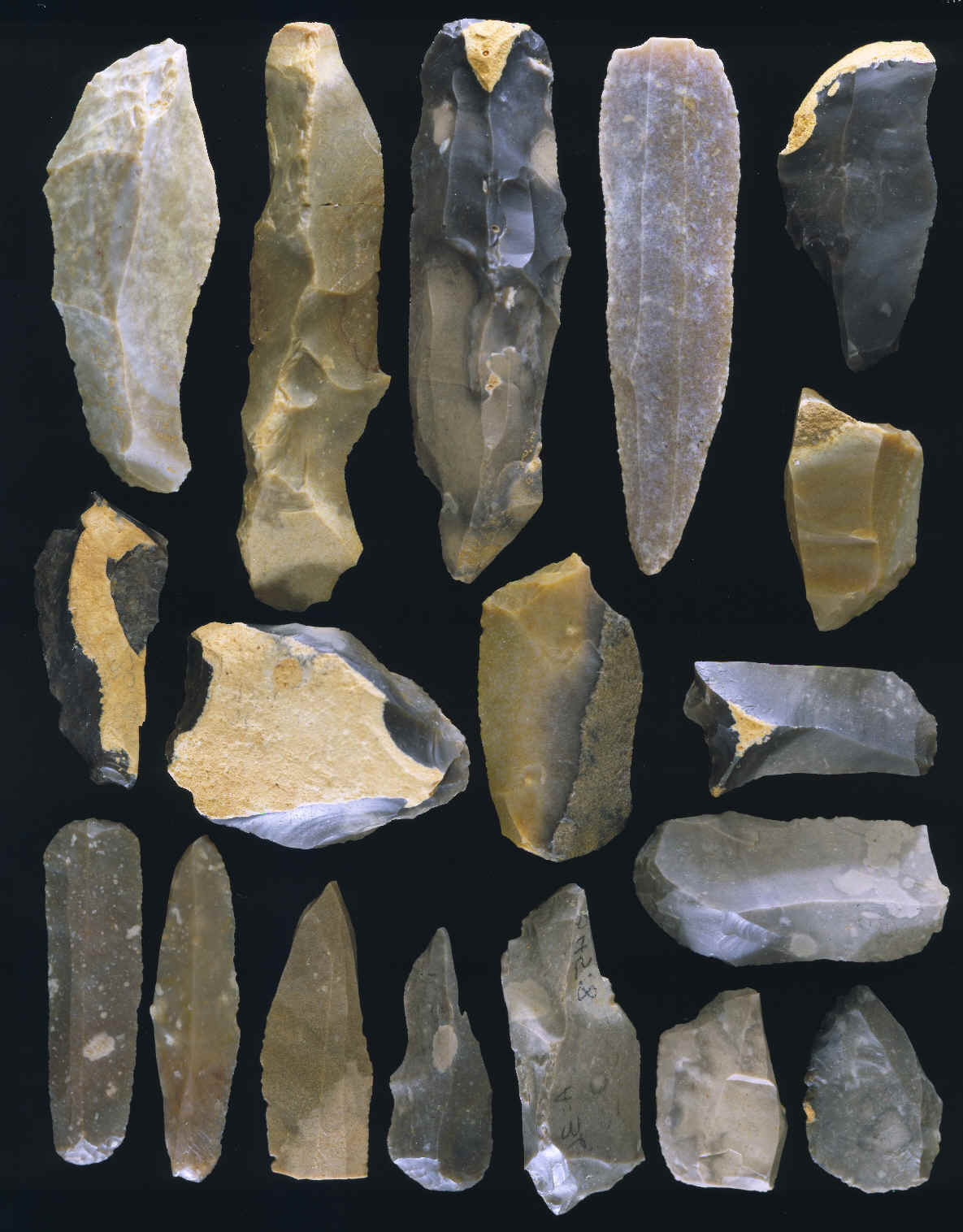
These impressive figures, painted in vivid polychrome red, yellow, brown, and black, with solid, closed outlines, show the lively naturalism, close observation of nature, and linear, one- dimensional approach that characterized mature Aurignacian art.The exploitation of osseous materials is one of the main innovations associated with the advent of the Upper Paleolithic in Europe. One of the finest examples of Aurignacian art is represented by paintings of animals, such as horses and bulls, on the walls and ceilings of the cave at Lascaux, in southwestern France. A characteristic feature of these early pictures, which persisted throughout the Aurignacian period, is their “twisted perspective,” which shows, for example, the head of the animal in profile and its horns twisted to a front view. The stencilings were succeeded by the development of figural painting. Probably the first paintings are stencilings outlined in colour of actual hands held against the cave walls. Cave art was produced almost exclusively in western Europe, where, by the end of the Aurignacian Period, hundreds of paintings, engravings, and reliefs had been executed on the walls, the ceilings, and sometimes the floors of limestone caves. In the later part of the Aurignacian Period, a fusion of Eastern sculptural and Western linear traditions occurred in the West, resulting in small carvings of greatly increased naturalism the engraved details show attempts at foreshortening and shading with cross- hatched lines. Later, animal figures were carved in pieces of bone and ivory.Īt the same time, a tradition of true sculpture in the round grew up in eastern Europe, with vividly realistic, though simple, clay figurines of animals and highly stylized statuettes of pregnant women, the so- called Venus figures, presumably fertility figures.
#Aurignacian tool industry portable
The earliest examples of the small, portable art objects produced during this period are from western Europe and consist of pebbles with very simple engravings of animal forms. The art of the Aurignacian culture represents the first complete tradition in the history of art, moving from awkward attempts to a well- developed, mature style. Double end scraper from the Aurignacian stone tool industry.īones and antlers were made into points and awls by splitting, sawing, and smoothing split- base and biconical points provide evidence for hafting. Their flint tools include fine blades and bladelets struck from prepared cores rather than using crude flakes. The Aurignacian tool industry is characterized by worked bone or antler points with grooves cut in the bottom. Their flint tools include fine blades and bladelets struck from prepared cores rather than. The Aurignacian Industry was a widely distributed cultural sequence which spanned much of Europe and parts of Asia in the Upper Paleolithic.

Bone point Aurignacian Geographical range Eurasia: Period Upper Paleolithic: Dates circa 38000 BCE Aurignacian tool technologies were dominated by burins, scrapers, and bone tools.

This feature is known to occur in some Levantine Initial. TO BE OR NOT TO BE AURIGNACIAN: THE ZAGROS UPPER PALEOLITHIC 359 Typologically, the Early Zagros Aurignacian includes both Middle and Upper Paleolithic tool types3. More varied than earlier industries with finer blades. Characterized by bone tools such as antler points and worked bone. European Upper Paleolithic tool industry beginning at 40,000 years ago. Blades and burins were made by the punch technique and came in several sizes.Īurignacian tool industry. Flakes were retouched to make nosed scrapers, carinate (ridged) scrapers, and end scrapers. The Aurignacian differs from other Upper Paleolithic industries mainly in a preponderance of stone flake tools rather than blades. The Aurignacian culture was marked by a great diversification and specialization of tools, including the invention of the burin, or engraving tool, that made much of the art possible.



 0 kommentar(er)
0 kommentar(er)
